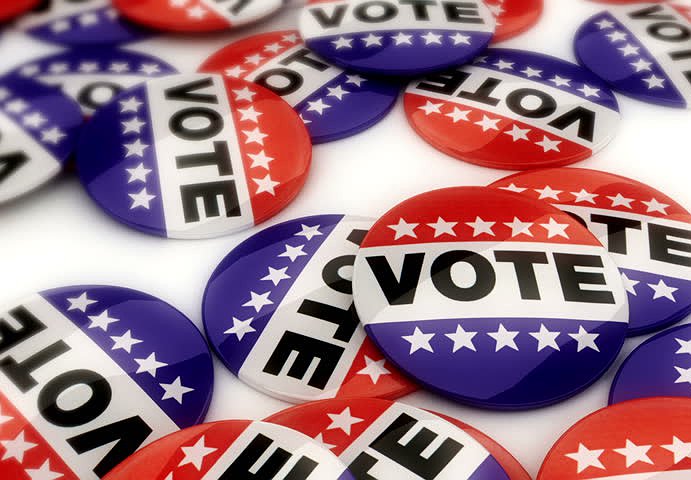Now, at the start of July, Vice President Biden, the overwhelmingly smaller spender in the primary, is the presumptive Democratic nominee; the number of COVID-19 cases has surpassed 2.6 million (as of June 29th); the candidacies of Mayor Bloomberg and Mr. Steyer are distant memories; and the pandemic has significantly impacted many media companies, leaving layoffs and diminishing advertising revenues in its wake. To the latter point, The Wall Street Journal reported this June—citing a report from WPP plc—that U.S. advertising spending is being projected to fall by 13% in 2020, dropping to $207.9 billion from 2019's $238.8 billion. Of course, advertising in industries such as automotive and travel have been impacted in particular, with travel-related advertising spending falling markedly in the first quarter. However, in the view of Dan Sinagoga, vice president, political sales for Effectv, whom I interviewed for this piece, political advertising is poised to weather the storm—and even potentially exceed pre-COVID-19 expectations.
Although stopping just short of calling political advertising "recession proof," Sinagoga affirmed his belief that political advertising would not experience the same degree of struggles as other areas. To this point, he described observing dips in March and April, followed by spending picking up again in May, and reaching normal levels by the beginning of June. The implication continues to be that while consumers may postpone certain retail purchases on account of the virus, the general election is still on November 3rd.
Sinagoga's view has also been shared by a number of other commentators and advertising experts. To this point, by mid-May, Zach Montellaro was reporting at Politico that "Political ads [are] expected to explode, even as economy tanks." Citing a report from Advertising Analytics and Cross Screen Media, Montellaro reported that 2020 projections for political spending had reached $6.7 billion, a 12% increase from the initial $6 billion estimate forecasted prior to the pandemic's arrival. Sensing a point also alluded to by Casey Bessette and Lauren Richards of Sage Media Planning, who were both also interviewed for this piece, Montellaro put forward the idea that actually the virus may spur more spending due to reduced opportunities for candidates to campaign in person or to hold typical events. (This could become all the more the case if the Democratic National Committee elects to continue its plans to downsize the permitted attendance for the Democratic National Convention in August.)
In addition to altering the size of the Democratic Convention, causing the Republican Convention to partially move from Charlotte, NC to Jacksonville, FL, and affecting the campaign strategies of the candidates, the pandemic resulted in a number of other adjustments. These have ranged from re-scheduled primaries to making more widespread the practice of mail-in voting, the latter of which featured prominently in the May 12th special election in California's 25th congressional district. Indeed, some of these changes have come to bear on political advertising itself. Bessette and Richards described the impact of greater numbers of voters voting by mail: "We're seeing a trend [where] instead of just advertising the week or two before the primary, we're starting to strike out our media plans four to six weeks out because people are voting that entire time, and you can't just rely on getting them the week before the election." And, among other changes engendered by the pandemic, surging viewership of television, particularly during daytime, has increasingly factored into decision-making about placing political advertisements.
Although by all reports political advertising has fared better than other categories of advertisements, needless to say, political advertising is a function of campaign contributions. And campaign contributions are—almost by definition—susceptible to the ups and downs of an economy. This is all the more the case given ongoing concerns about pandemic-related unemployment. And for candidates such as President Donald Trump (or would have been Democratic nominee Bernie Sanders), who have benefited from small dollar donors, this might be all the more pressing.
Bessette and Richards, however, have argued that the events of the past several months in the United States, particularly when it comes to the pandemic, may result in a greater number of Americans taking a serious interest in this election, relative to past cycles, and this certainly could be expressed in the form of increased donation dollars. But, in any event, Bessette, Richards, and Sinagoga all shared a confidence that the 2020 election cycle would make for a particularly strong showing for political spending. As Sinagoga put it, "We're very optimistic that with the significant, record-setting fundraising that took place leading into COVID-19—and what is going to take place as we get into the back part of the summer—the wheels seem to be fully back on track, and that's going to outpace what we saw in 2016 and 2018, which was the largest political spending year ever, at $5 billion and change." And this remains their forecast, even with Michael Bloomberg and Tom Steyer far more on the sidelines than they were in February.
Click the social buttons to share this story with colleagues and friends.
The opinions expressed here are the author's views and do not necessarily represent the views of MediaVillage.com/MyersBizNet.




